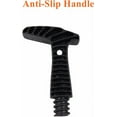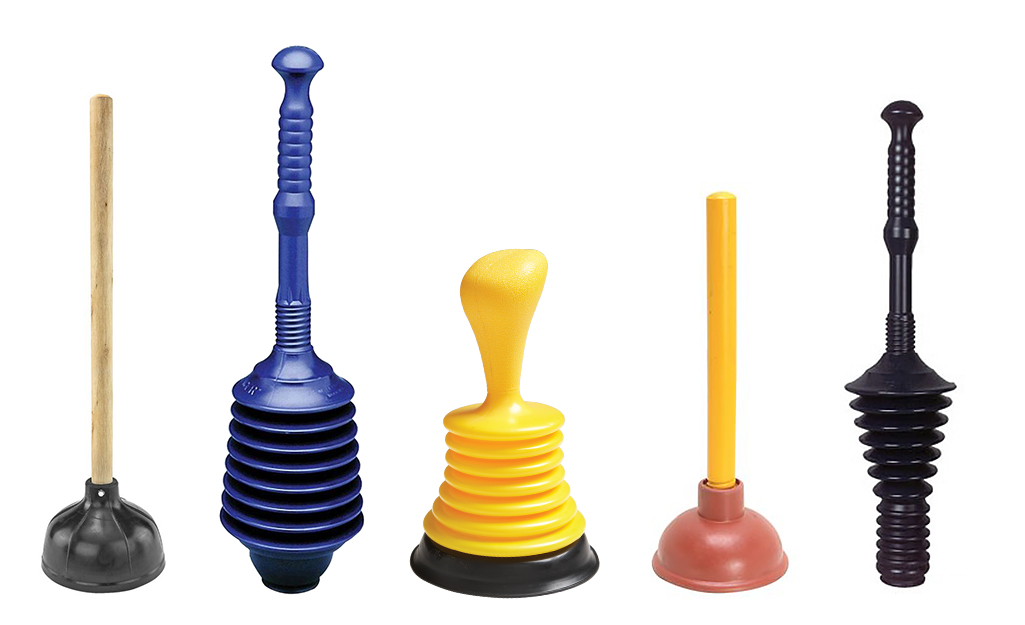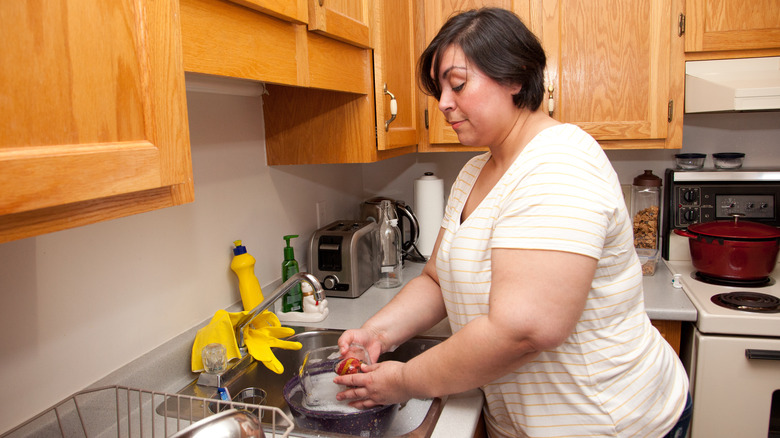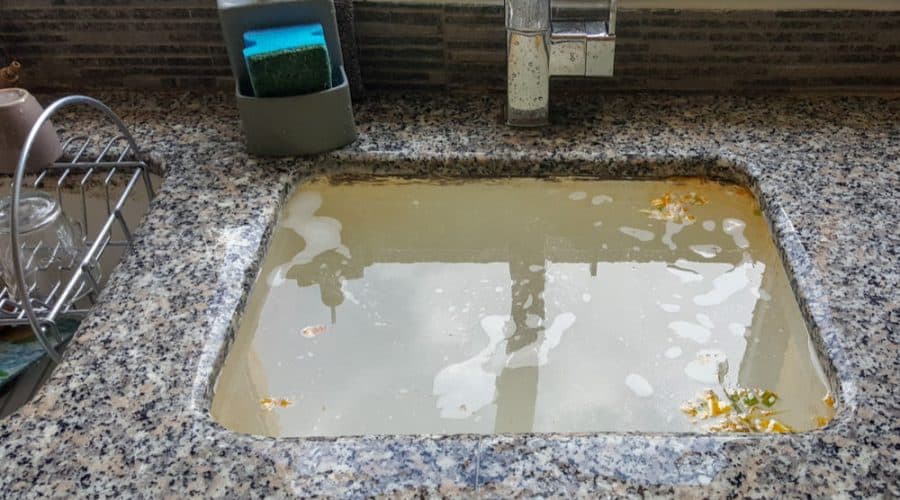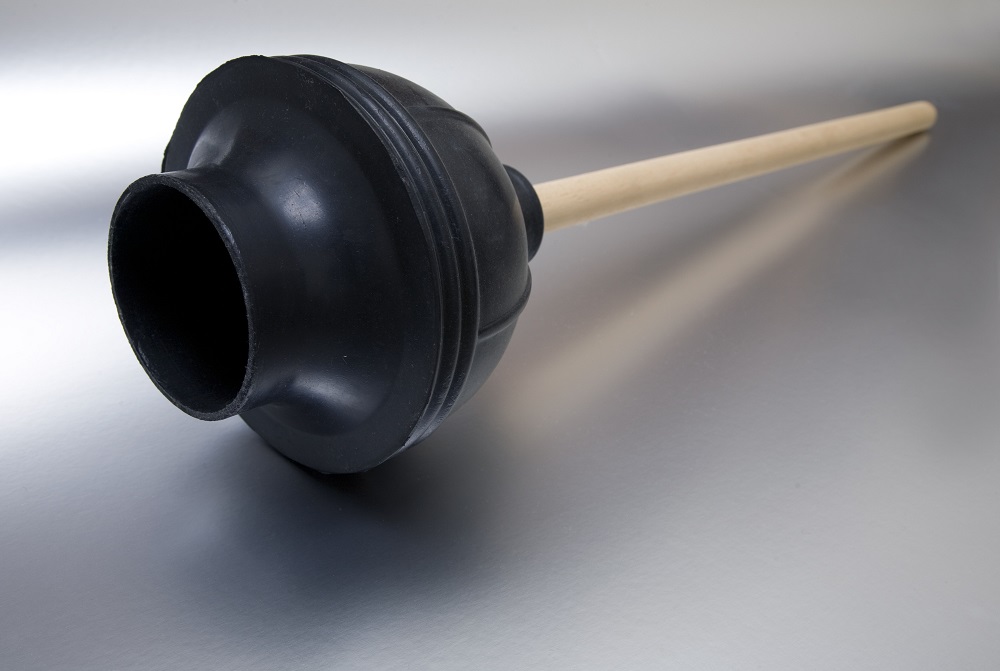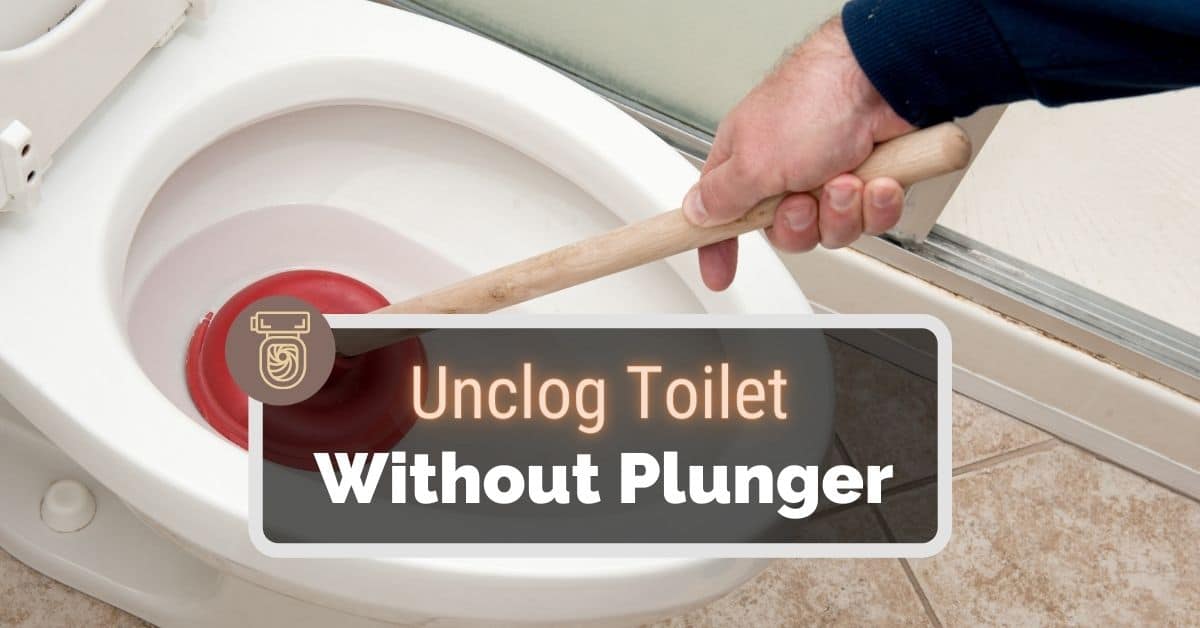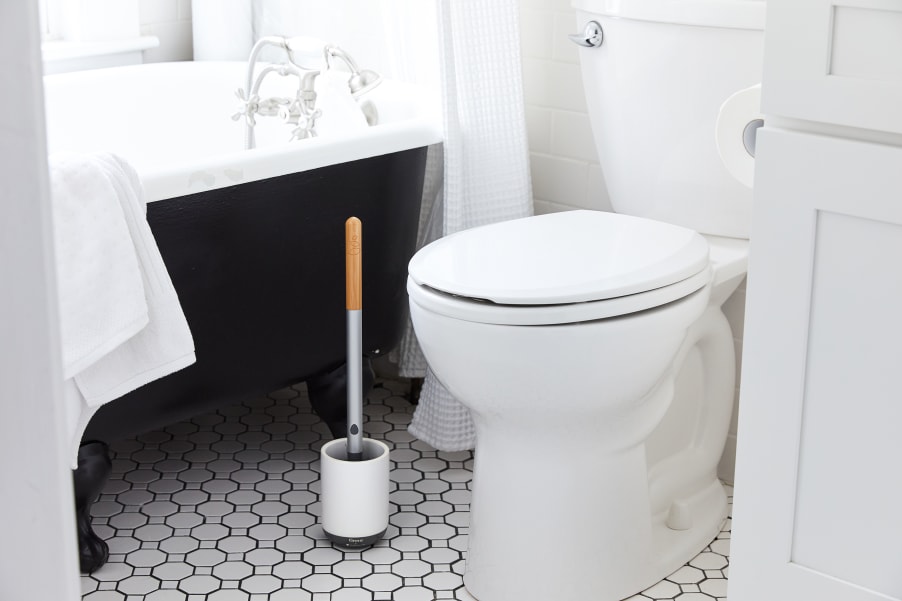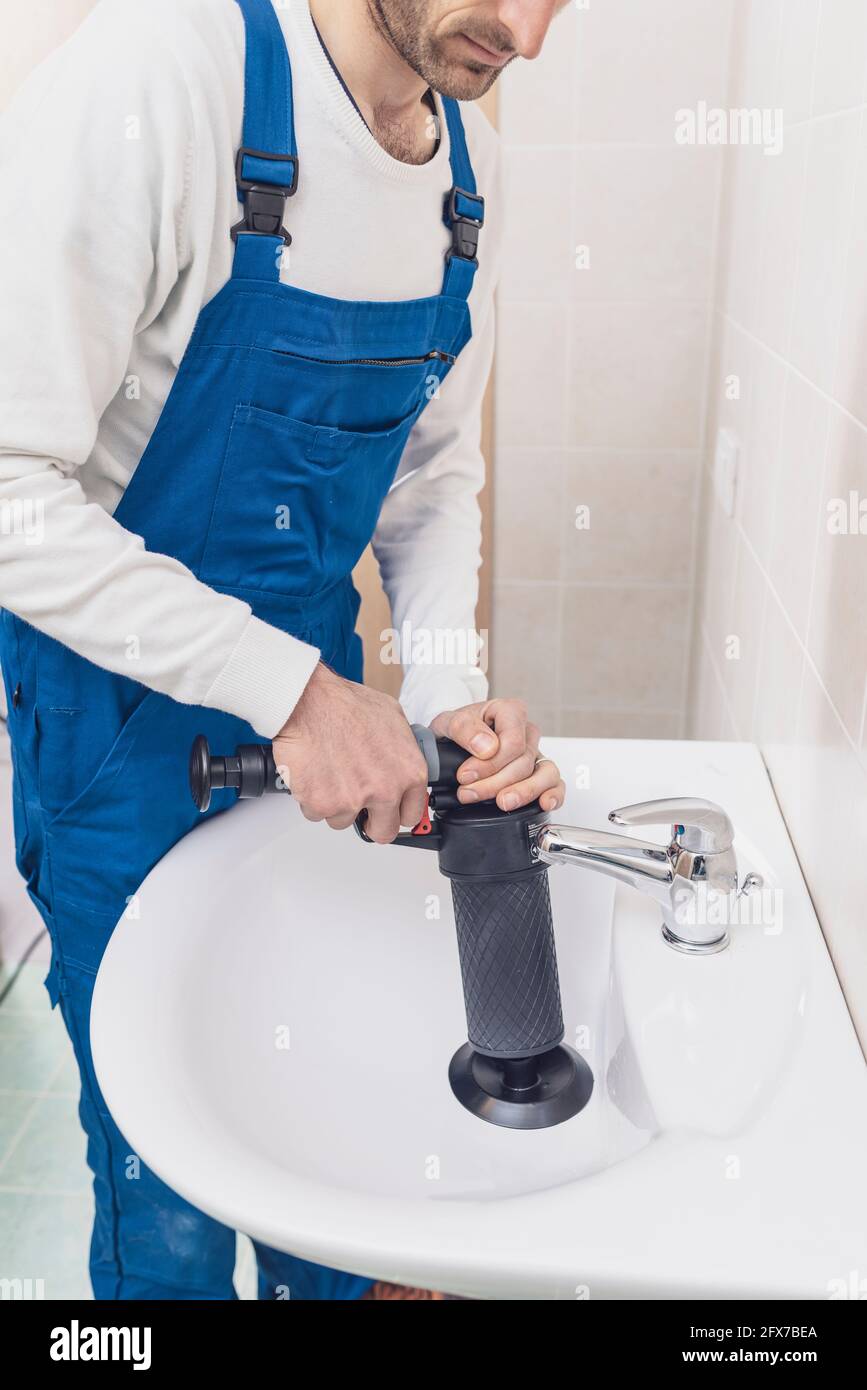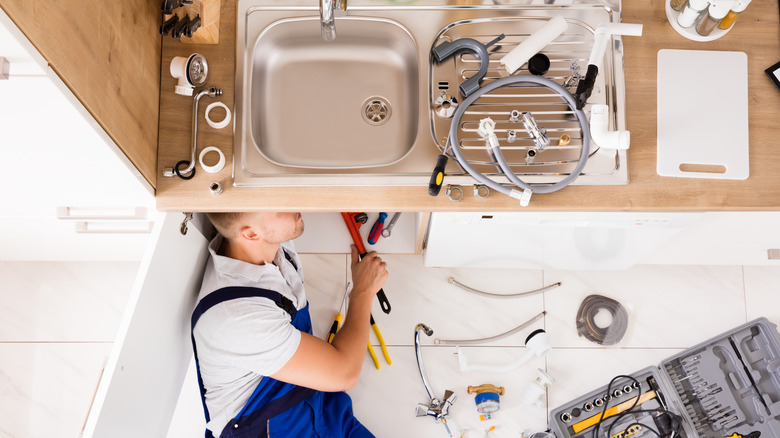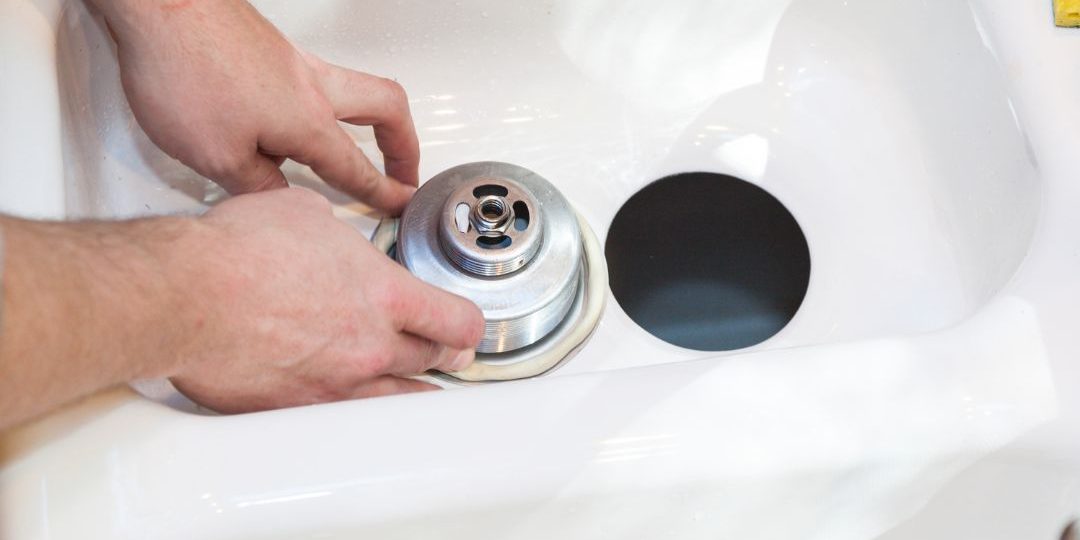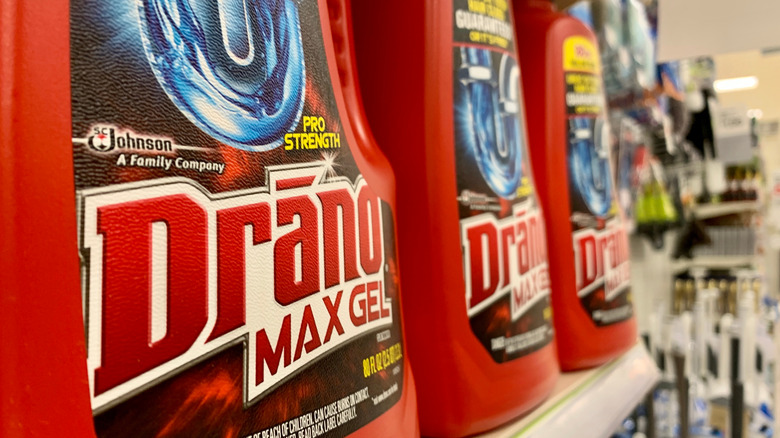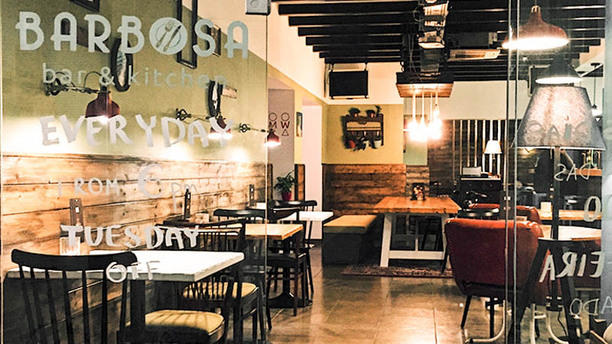1. How to Use a Plunger to Unclog a Kitchen Sink
If you're dealing with a clogged kitchen sink, don't panic. Before you call a plumber and spend a fortune, try using a plunger to clear the blockage. With a little bit of elbow grease and these simple instructions, you can have your sink draining properly in no time.
2. Step-by-Step Guide for Using a Plunger to Unclog a Kitchen Sink
First, make sure you have the right type of plunger. A flat rubber plunger with a flange on the bottom is best for unclogging sinks. Fill the sink with enough water to cover the rubber part of the plunger and then place it over the drain, making sure to cover the entire opening.
Next, press down firmly on the plunger and then quickly pull up. This motion creates suction and helps to dislodge the clog. Repeat this plunging motion several times, making sure to keep the plunger tightly sealed against the drain.
If the clog doesn't clear after a few attempts, try adding a few drops of dish soap to the water in the sink. The soap can help to break down any grease or debris that may be causing the blockage.
3. Tips for Using a Plunger to Unclog a Kitchen Sink
Here are a few tips to keep in mind when using a plunger to unclog your kitchen sink:
- Make sure the plunger is completely covering the drain to create a strong seal.
- Use a plunger specifically designed for sinks, as other types may not be as effective.
- If you have a double sink, make sure to plug the other side with a rag or stopper before plunging.
- If your sink has a garbage disposal, make sure it is turned off before plunging.
4. Common Mistakes to Avoid When Using a Plunger to Unclog a Kitchen Sink
While using a plunger is a simple and effective way to unclog a kitchen sink, there are a few mistakes that can hinder your efforts:
- Using too much force can cause the water to splash out, making a mess. Use firm pressure, but not so much that the water splashes out of the sink.
- Not using enough water in the sink can also hinder the plunger's effectiveness. The water helps to create suction and push the clog out.
- Using the wrong type of plunger can make the process more difficult. Make sure you have a flat rubber plunger with a flange for best results.
5. The Best Type of Plunger to Use for Unclogging a Kitchen Sink
As mentioned before, a flat rubber plunger with a flange on the bottom is the best type of plunger to use for unclogging a kitchen sink. This type of plunger creates a strong seal and is designed specifically for sinks. Avoid using a plunger with a bell-shaped end, as these are better suited for unclogging toilets.
6. How to Properly Position a Plunger for Unclogging a Kitchen Sink
The key to successful plunging is proper positioning. Make sure the plunger is completely covering the drain and that the rubber is making a tight seal against the sink. This will help to create strong suction and dislodge the clog.
7. Using a Plunger vs. Other Methods for Unclogging a Kitchen Sink
While there are other methods for unclogging a kitchen sink, such as using a drain snake or pouring boiling water down the drain, a plunger is often the most effective and least messy option. However, if the plunger isn't working, it may be time to try another method or call a professional for help.
8. How to Tell if a Plunger is Working to Unclog a Kitchen Sink
You'll know the plunger is working when you start to see the water in the sink drain or hear a gurgling sound. If the water is still not draining after several attempts, try using a different method or calling a professional for assistance.
9. How to Clean and Store a Plunger After Using it to Unclog a Kitchen Sink
After successfully unclogging your kitchen sink, it's important to properly clean and store your plunger. Rinse it off with hot water and some disinfectant soap, and then let it air dry completely before storing it in a dry place. This will help to prevent any bacteria or germs from spreading.
10. When to Call a Professional for Help with Unclogging a Kitchen Sink
If your attempts to unclog a kitchen sink with a plunger are unsuccessful, it may be time to call a professional plumber. They have the tools and expertise to tackle tough clogs and get your sink draining properly again.
Additionally, if you notice the water draining slowly even after using a plunger, it may be a sign of a more serious issue such as a clogged pipe. In this case, it's best to seek professional help to prevent further damage.
Using a plunger to unclog a kitchen sink is a simple and effective option that can save you time and money. By following these tips and techniques, you can quickly and easily clear any clogs and get your sink back to working properly.
Why a Plunger is the Best Tool for Unclogging a Kitchen Sink
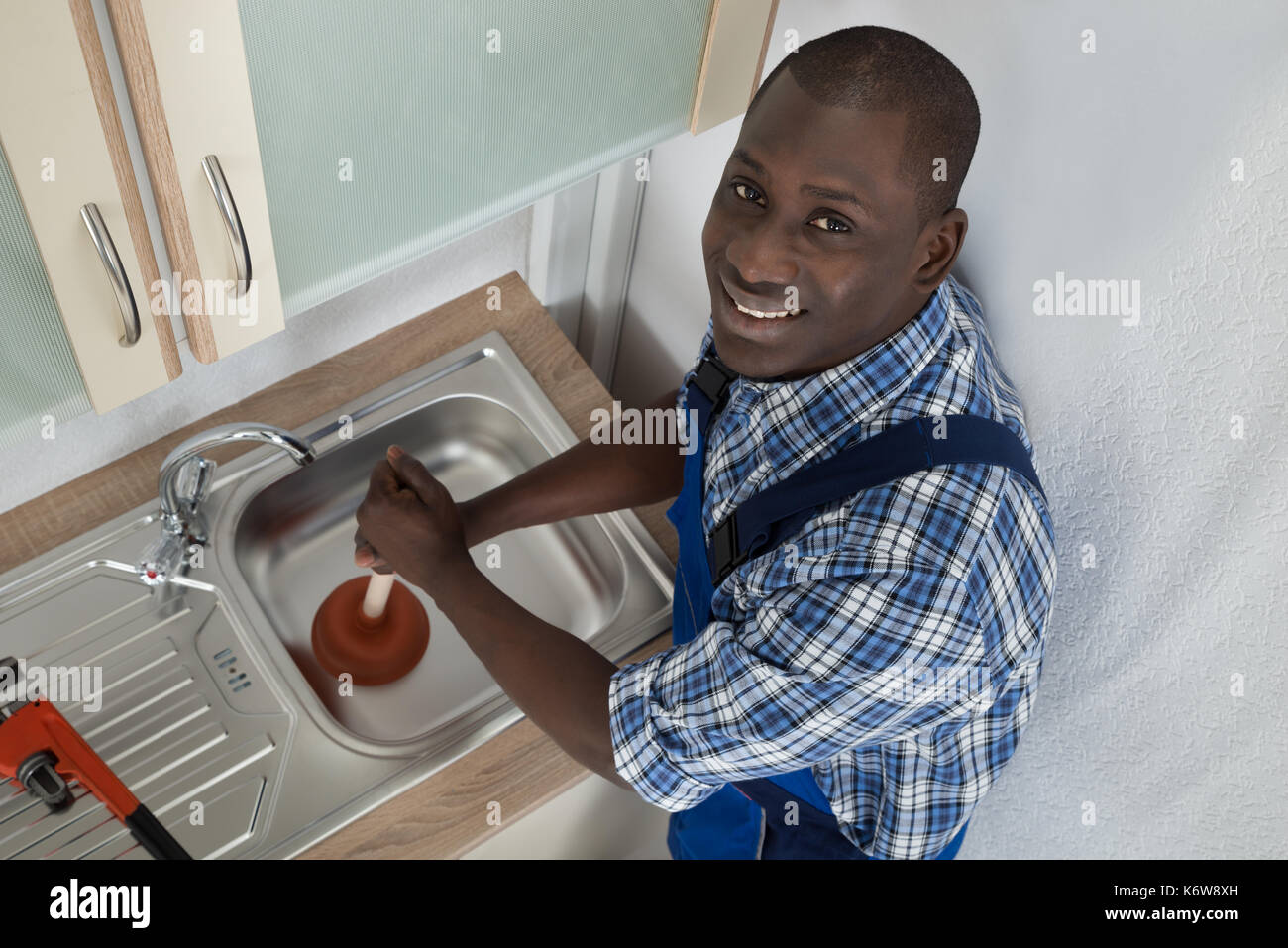
The Importance of a Plunger in Every Household
 When it comes to household maintenance, there are a few essential tools that every homeowner should have on hand. One of these tools is a plunger. While most people associate plungers with unclogging toilets, they are also incredibly useful for unclogging kitchen sinks.
A plunger is a simple yet effective tool that can save you time and money when dealing with a clogged sink.
When it comes to household maintenance, there are a few essential tools that every homeowner should have on hand. One of these tools is a plunger. While most people associate plungers with unclogging toilets, they are also incredibly useful for unclogging kitchen sinks.
A plunger is a simple yet effective tool that can save you time and money when dealing with a clogged sink.
How a Plunger Works to Unclog a Kitchen Sink
 Before we discuss the benefits of using a plunger, it's essential to understand how it works. A plunger creates suction by pushing and pulling water in and out of the drain. This pressure helps to dislodge any blockages in the pipe and allows the water to flow freely again.
The rubber end of the plunger creates a seal around the drain, preventing any air or water from escaping, maximizing the suction power.
Before we discuss the benefits of using a plunger, it's essential to understand how it works. A plunger creates suction by pushing and pulling water in and out of the drain. This pressure helps to dislodge any blockages in the pipe and allows the water to flow freely again.
The rubber end of the plunger creates a seal around the drain, preventing any air or water from escaping, maximizing the suction power.
Benefits of Using a Plunger for Unclogging a Kitchen Sink
 There are several reasons why a plunger is the go-to tool for unclogging a kitchen sink. Firstly,
it's a cost-effective solution
that doesn't require any special skills or training. Plungers are relatively inexpensive and can be found at any local hardware store.
They are also easy to use and don't require any harsh chemicals, making them a safer and more environmentally friendly option.
Using a plunger to unclog a kitchen sink also
prevents the need for a plumber
, which can save you a significant amount of money. Most clogs in kitchen sinks can be easily cleared with a plunger, so you won't have to spend money on a professional to come and fix the issue.
A plunger can also save you time, as it can quickly clear a clog in just a few minutes.
There are several reasons why a plunger is the go-to tool for unclogging a kitchen sink. Firstly,
it's a cost-effective solution
that doesn't require any special skills or training. Plungers are relatively inexpensive and can be found at any local hardware store.
They are also easy to use and don't require any harsh chemicals, making them a safer and more environmentally friendly option.
Using a plunger to unclog a kitchen sink also
prevents the need for a plumber
, which can save you a significant amount of money. Most clogs in kitchen sinks can be easily cleared with a plunger, so you won't have to spend money on a professional to come and fix the issue.
A plunger can also save you time, as it can quickly clear a clog in just a few minutes.
Tips for Using a Plunger to Unclog a Kitchen Sink
 To effectively use a plunger to unclog your kitchen sink, start by
filling the sink with a few inches of water to create a good seal around the plunger.
Next, place the plunger over the drain and begin to push and pull in a rapid motion. You may need to repeat this process a few times to completely clear the clog.
It's also important to use a plunger that is the right size for your sink drain to ensure maximum suction power.
To effectively use a plunger to unclog your kitchen sink, start by
filling the sink with a few inches of water to create a good seal around the plunger.
Next, place the plunger over the drain and begin to push and pull in a rapid motion. You may need to repeat this process a few times to completely clear the clog.
It's also important to use a plunger that is the right size for your sink drain to ensure maximum suction power.
In Conclusion
/woman-wearing-yellow-washing-up-gloves-to-unblock-sink-using-plunger-close-up-131987463-5887cfc03df78c2ccd92ec9e.jpg) Next time you encounter a clogged kitchen sink, don't reach for harmful chemicals or call a plumber right away.
Give your trusty plunger a try and see the results for yourself.
With its efficiency, cost-effectiveness, and ease of use, a plunger is undoubtedly the best tool for unclogging a kitchen sink. Make sure to have one in your household toolkit for any plumbing emergencies.
Next time you encounter a clogged kitchen sink, don't reach for harmful chemicals or call a plumber right away.
Give your trusty plunger a try and see the results for yourself.
With its efficiency, cost-effectiveness, and ease of use, a plunger is undoubtedly the best tool for unclogging a kitchen sink. Make sure to have one in your household toolkit for any plumbing emergencies.

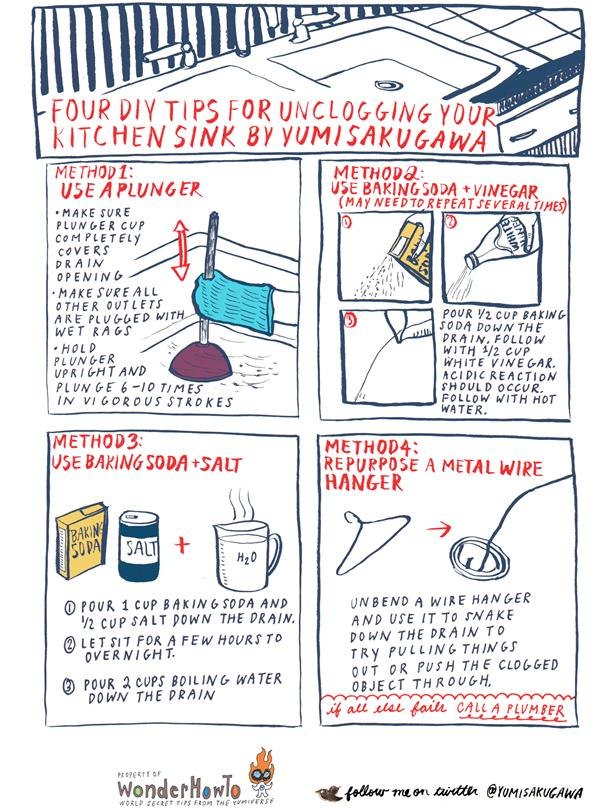




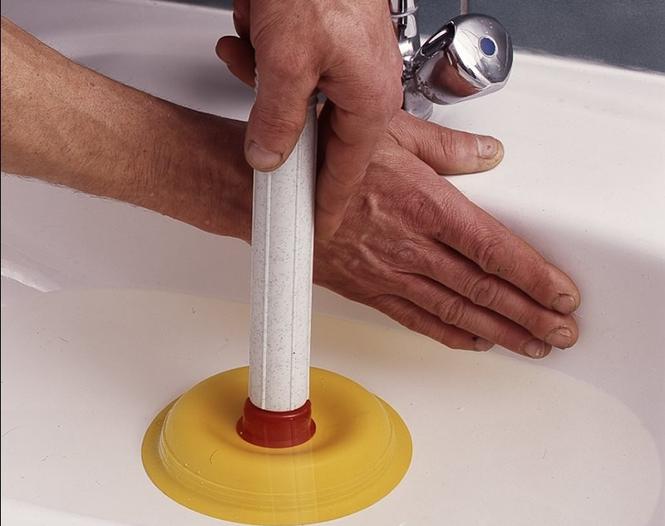

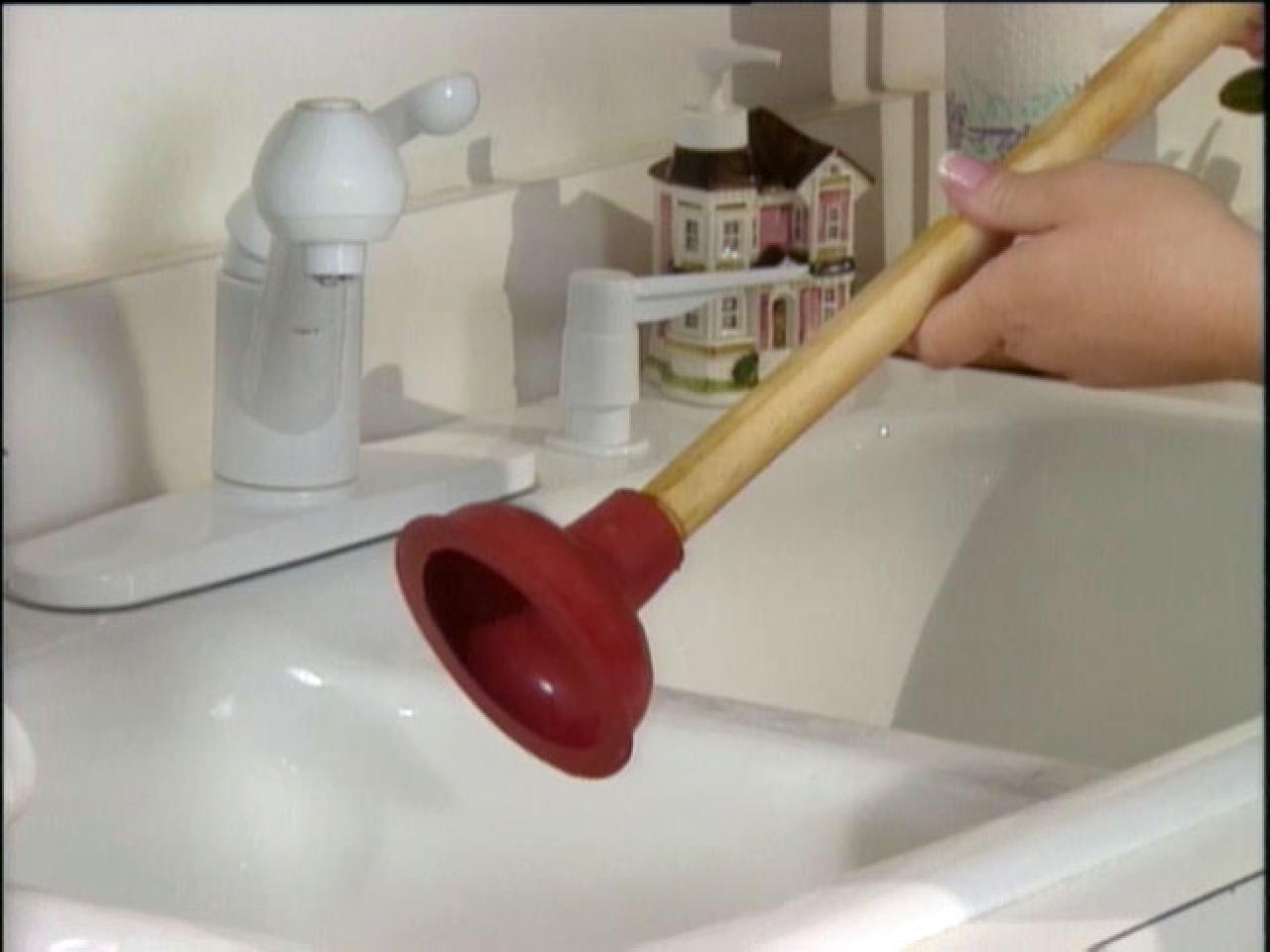

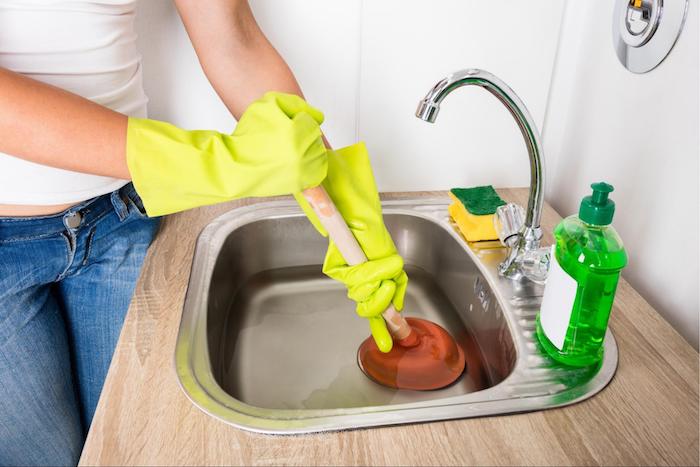













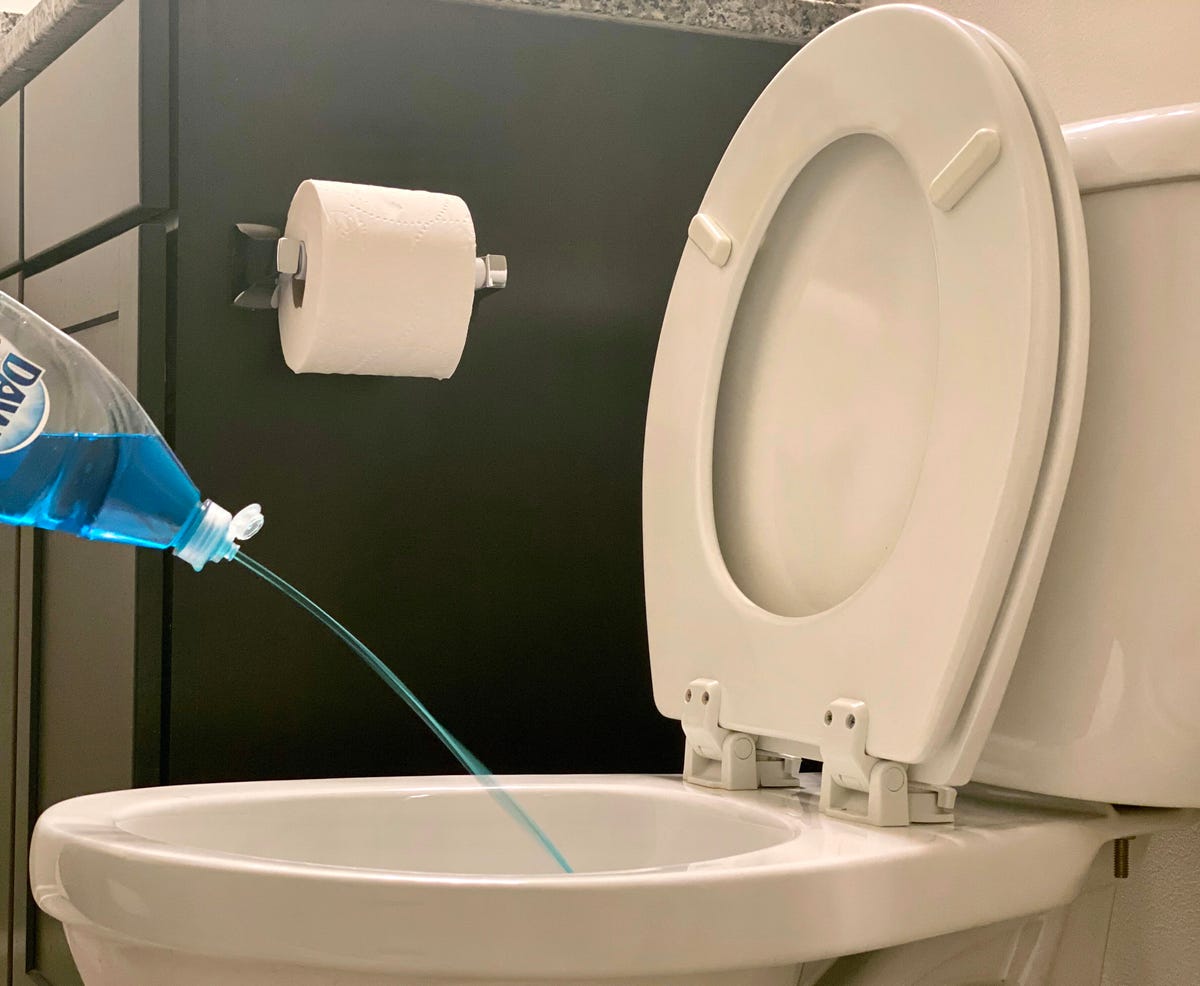


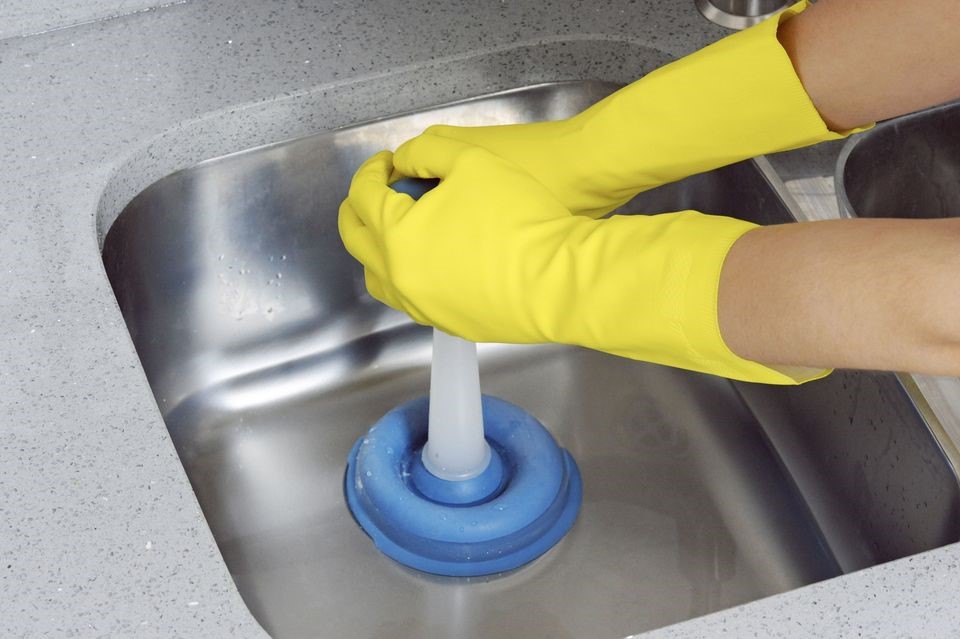



:max_bytes(150000):strip_icc()/woman-wearing-yellow-washing-up-gloves-to-unblock-sink-using-plunger-close-up-131987463-5887cfc03df78c2ccd92ec9e.jpg)


:max_bytes(150000):strip_icc()/how-to-use-a-sink-auger-1825090-hero-70d39960647643819dbb4c1f3a05e929.jpg)

